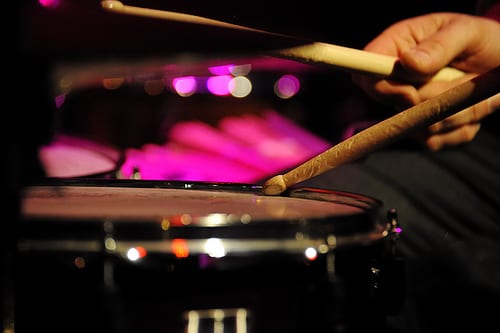 Drummers, you’ve got it easy. Grab some sticks and something to hit, and your makeshift instrument is just as good as the real thing… right? Sure, maybe if it’s just an impromptu jam session with friends. But for proper technique and to really improve on the drums, you’ll need the right equipment – which includes your drumsticks.
Drummers, you’ve got it easy. Grab some sticks and something to hit, and your makeshift instrument is just as good as the real thing… right? Sure, maybe if it’s just an impromptu jam session with friends. But for proper technique and to really improve on the drums, you’ll need the right equipment – which includes your drumsticks.
Choosing the right drumsticks can be as selective as buying a violin bow for violinists, and you may need to test out several different types before settling. There are also a few factors you’ll want to keep in mind, depending on the sound and genre you’re going after.
Practically every style of music has an appropriate drumstick that goes along with it – are you drumming for a heavy metal band or with a marching band, for example? You’ll want thicker drumsticks to handle the abuse and absorb the shock. Trying your hand at jazz? Consider a lighter and smaller drumstick.
Here are a four things to start you off as you select your drumsticks, courtesy of Vic Firth’s website:
Thickness
The thickness of a drumstick affects the overall weight, projection and strength. A thicker, heavier stick creates greater sound and offers increased durability. A thinner stick is lighter, faster and plays with greater ease. Generally, you need to match the thickness of your stick selection with the style of music that you play, and the volume in which you intend to play it.
For jazz, latin and fusion playing, the most popular stick choice is the 5A (dia. = .565″), although you might want to experiment with something a bit thicker if you find that the stick doesn’t produce the volume that you need (or if you tend to break sticks easily). If you play rock, pop, or anything outside the ‘acoustic’ setting, the 5B is a popular choice (dia.=.595″). Hard rock or metal drummers might want to step up to an even larger stick.
Taper
The taper affects the feel and behavior of a pair of sticks. A long taper produces more flex and a faster response, while a short taper is stiffer and offers additional strength. The amount of taper and location of the “shoulder” (where the taper begins) determines the balance of the stick. If you’re looking for a stick that feels “front end heavy” (heavier on the tip) and offers more power, find a stick that has a short taper and strong shoulder.
Tip Shape
The tip shape is critical to the overall sound a stick will produce on drums and cymbals (the sound difference is more pronounced on cymbals).
-A full “tear drop” tip produces a dark, rich cymbal sound (more lows).
-A “barrel” tip produces a broad sound. Great for studio work.
-A small round tip produces a brighter cymbal sound (more highs).
-A large round tip produces a “fatter” sound.
Length
Drumstick sizes and the length of the stick affect its leverage and “reach” around the drum set. Even if two sticks have the same diameter, they can have drastically different feels because of length differences.
These things considered, you’ll want to test out different drumsticks and see how they feel in your hands. Consider your drumsticks an extension of your limbs – what feels most comfortable? Don’t be afraid to try out several different types and experiment, and you’ll figure out what works best for you.
What kind of drumstick sizes or types do you prefer? Share your thoughts with the community – head on over to our Facebook page!
Learn more insider advice for musicians and tips for drummers – sign up for email updates here!
You might also like…
– How to Play Drums Without a Drum Set
– How to: Practice the Drums When Time is Limited
– Jam Session Etiquette for Drummers
Suzy S.
